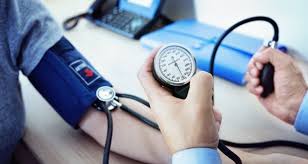Source: irishtimes.com
Up to 150,000 Irish blood pressure patients may not need additional drug treatment despite new guidelines suggesting they do, according to new research.
The study by the National Institute for Prevention and Cardiovascular Health (NIPC) in Galway and the National University of Ireland Galway calls into question the validity of recent changes to treatment recommendations for up to a quarter of the 600,000 Irish people who are being treated for high blood pressure.
US and European guidelines for treating hypertension were recently changed in that high blood pressure was redefined as 130/80, instead of the previous level of 140/90.
As a result, as many as 150,000 patients with a bottom blood pressure number of over 80, but a normal top blood pressure number below 130, are potentially at risk of being overtreated, according to the US-Irish research.
This is because the study found that this specific type of blood pressure pattern does not appear to be adversely affecting their health.
Blood pressure levels are denoted by two numbers, with the top number known as the systolic, and the bottom number as the diastolic reading. The top number records blood pressure when the pressure is at its highest, ie when the heart muscle squeezes out the blood. The bottom number is when the heart relaxes and allows the blood to flow back into the heart.
The study, published in the Journal of the American Medical Association, found the recommendation to lower the diastolic threshold for hypertension from 90 to 80 was based on expert opinion – a relatively weak type of evidence – not on results from clinical trials.
Target
Prof J William McEvoy, medical and research director of the NIPC, said despite differences between them in the definition of high blood pressure, US and European guidelines both recommend the target of 130/80 be achieved for those receiving treatment to lower their blood pressure.
As a result, their doctors could be aiming to get the diastolic (lower) number to less than 80 despite the patient having a normal systolic (top) blood pressure of below 130.
“This is a concern, because our team found no adverse health outcomes from a diagnosis of isolated diastolic hypertension [normal top number but higher bottom number] when the new guideline criteria are used.
“The absence of negative health outcomes in this group challenges the need to intensify the blood pressure treatment of these adults with higher diastolic blood pressure. Instead the main focus should be on getting the top number [systolic blood pressure] under control.”
High blood pressure, which usually has no symptoms, is regarded as a major risk factor for heart disease and stroke.
